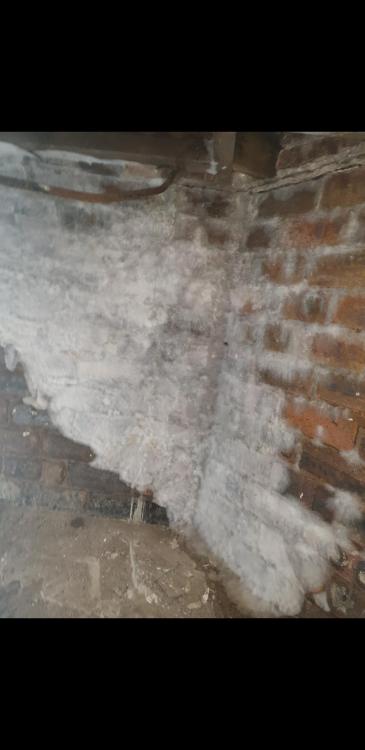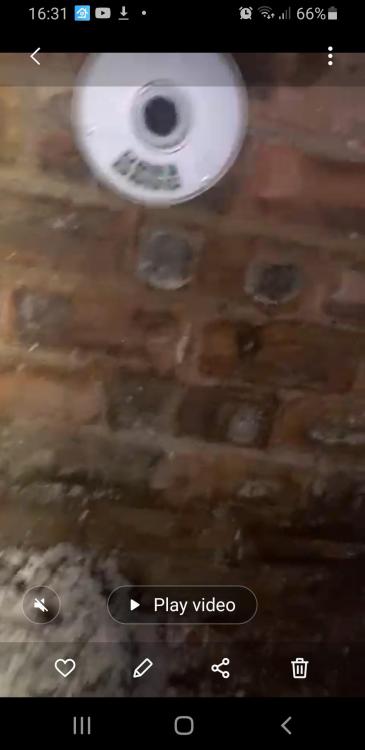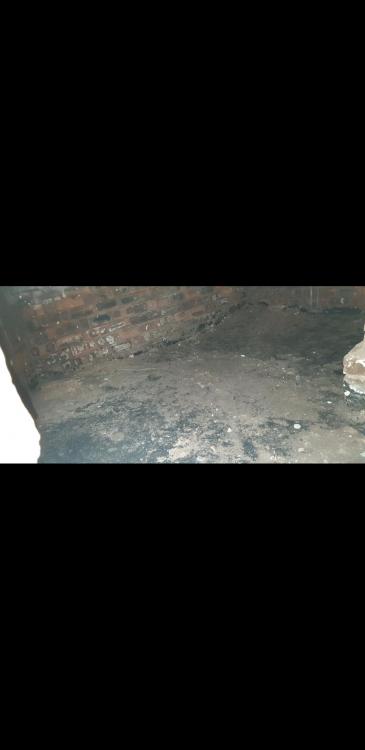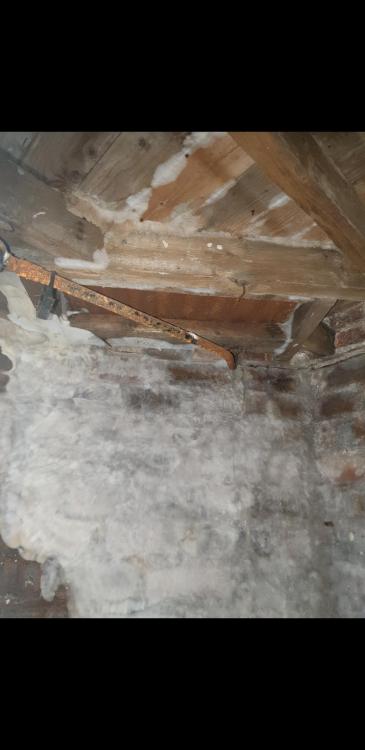-
Posts
28 -
Joined
-
Last visited
Personal Information
-
Location
glasgow, uk
Recent Profile Visitors
The recent visitors block is disabled and is not being shown to other users.
riboid's Achievements

Member (3/5)
5
Reputation
-
Yes, we did the ICF and on the insulate raft foundation system. The raft insulation has rebar and concrete poured over it, so compression is ok with that. All engineered and should be no problem.
-
I am pretty confident on what my solution is for my basement problem, but it would be prudent to push it out there for some clarification: Basement roof has been sprayed with Icynene open cell insulation (increased air tightness and likely exaggerated my issue) and since we had the roof and downstairs floorboards exposed, it got obviously wet. Now, the liquid tar which was originally poured in the solum has, in large areas, gone and we have soil exposed, which is damp. My humidity readings are 90+, so reaching saturation levels and we have had severe mould growth (like a white fungicidal alien). I have installed forced ventilation, but, I know that the volume of the basement is way too big to cope for the fans to do anything and mould growth continues in the perfect environment for its growth. To make matters worse, we had a chest freezer in the hall, just beside basement hatch, which was pissing water for heaven knows how long. That water has ran down (always finds a way) and run into the basement and also under my flooring (brand new £55 per m2) which has caused mushrooms to grow in our hallway (cleaned off and pointed my dehumidifier at it). Post basement works, ill lift up the flooring and rectify and moisture that is lying on top of the insulation and vapour barrier that is below the wooden floor (I think the vapour barrier has enabled the freezer water to sit there and struggle to dry out as the engineered wood is sitting on top of it. Below is my plan: 1. Suited and booted with my hepa 3 staged filtered vacuum, I will hoover up all signs of mould and fungus (yes, ill double bag the waste bag of the vacuum, wash down (bleach and appropriate chemicals) vacuum, wash filters etc - I worked in the asbestos removal industry, so well versed on protective measures). 2. The basement floor is immaculately clean, but I'll dust it out again and level of the ground as much as I can in readiness for the pour. 3. I'm gonna install 1000 swg heavy duty polythene on the floor, running it up the dwarf walls and basement columns about 100mm to 150mm, which will act as my vapour barrier. 4. I'm going to then install expanding foam tape around that polythene perimeter prior to concrete pour. 5. I'm going to then pump in concrete and level it all over my basement, ensuring that when it meets with the foundation wall/solum junctions, it touches the expanding foam. 6. Ill leave concrete to set for a few months, then I'll get a dehumidifier down there (every good home should have one) and dry that sucker out to see of my humidity levels have been resolved. 7. Pending humidity levels, I will then staple and tape a vapour barrier over the sprayed icynene filled joists to prevent moisture ingress into the insulation itself. Ill dust walls down, prime and then spray tack and then tescon vana tape vapour barrier to the wall. 8. Ill then look at my ground floor mushroom in the hall issue, by lifting the engineered wood up, do a clean up, dry off, clean down removing any fungal spires with bleach and solution and then dry out with dehumidifier. 9. Cross my fingers.
- 1 reply
-
- solum
- foundations bitumen
-
(and 2 more)
Tagged with:
-

Airtightness tape for windows and doors
riboid replied to Adsibob's topic in Mechanical Ventilation with Heat Recovery (MVHR)
I've spent so much on insulation and everything that goes with it, not sure if I'll ever recover the costs from a thermal improvement point of view, but, we have assembled a house not only for us, but for future generations too. Good job. -
riboid changed their profile photo
-
and keeping the form factor of the house simple. I know you said not necessarily passivhaus, but most of them conform to the simple square/rectangle box type which appears to the be the trend and helps it in terms of efficiency.
-

Airtightness tape for windows and doors
riboid replied to Adsibob's topic in Mechanical Ventilation with Heat Recovery (MVHR)
Caulk in itself has a tendency to shrink and move over the years and eventually dry out. Temperature was probably the wrong terminology. -

Airtightness tape for windows and doors
riboid replied to Adsibob's topic in Mechanical Ventilation with Heat Recovery (MVHR)
Problem with the caulk though, with temperature fluctuations it can shrink and move (we use mastics/caulks daily on my maintenance contract), so I would have always followed that caulking with tape. Your air tightness readings might be ok now, but due to that movement, they may not be so good in a few years, whereas the tape has been engineered to last over 100 years (went to the courses in ireland and glasgow). -

Airtightness tape for windows and doors
riboid replied to Adsibob's topic in Mechanical Ventilation with Heat Recovery (MVHR)
The concrete will obviously be dusty and porous, so the adhesion levels will not be as great as say on your aluminium. I just solvent washed/cleaned before application of this tape and its sticks very well. I did though, after taping up all of my windows, apply a liquid air tightness paint product to ensure it was properly sealed. Belt and braces. -
Yes, mines is certainly missing the coal tar, basically gone in a lot of places. Require a major clean up and then repair of the solum. Another major project...
-
If your insulation is 4" thick, then I would run it flush at the front of your frame and leave a gap at the back (and your drywall or gyproc will be pressing against the frame and insulation), but ensure that your insulation has a good vapour barrier and it is well taped up and always, always, rub your tape down by mechanical means (plastic strip or something) and not just your hands. Lots of debate and this subject and can get quiet complex.
-

Airtightness tape for windows and doors
riboid replied to Adsibob's topic in Mechanical Ventilation with Heat Recovery (MVHR)
Yeh, always on concrete or any similar substrates, I would apply that primer too. -

Airtightness tape for windows and doors
riboid replied to Adsibob's topic in Mechanical Ventilation with Heat Recovery (MVHR)
I have always used the tescon vana and it comes either split or whole along the 50mm width. Great stuff and sticks like shit to a blanket. -
I use hygrometers on a daily basis: so its the volume of moisture in the air at any given one time. Simply. Still a good metric to let you know where issues lie, etc.
-
Ferdinand - RH is relative humidity. It is the volume of moisture in the air at any given time and in a %. 100% is saturation, which means you the air cannot hold anymore moisture.
-
Steamy Tea - exactly and my basement is 100% testimony to that. Cleaned everything, washed it down with the right chemicals, preserved the wood and the brick, but the root cause is the solum damage, tar is gone, so I totally wasted my time getting suited and booted (tyvek masks, hepa filter vacuum etc) to clean it all up. Reinstate the solum will resolve it all (hopefully)
-
I think opening the doors and letting the humidity equalise inside and out would be the best idea. I have been on several projects, where they encapsulate and try (oil and gas) to preserve items, which could be anything from substations to equipment and more than not, the act of preservation or covering it with items actually does more harm than good rather than letting things breathe naturally. I would certainly wash down and then treat and prior to any insulation going in they studs, get a dehumidifier in (i hired an industrial one from jewsons but I have used mega dehums in the shipyards whilst overseeing complex paint/coatings projects) and dry that baby out as much as you can once it is more or less wind and water tight. You don't want to be locking moisture in anywhere.







